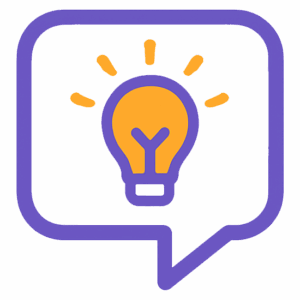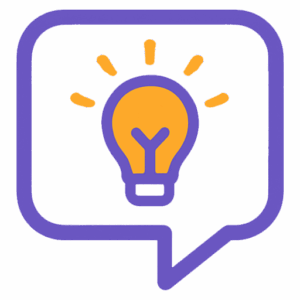When we think about learning a new language, the first thing that usually comes to mind is learning new words. Words are at the heart of communication — they allow us to name, describe, and express our thoughts, feelings, and experiences. The collection of these words that a person knows and uses is called vocabulary. But what exactly does vocabulary mean? How is it structured, how do we learn it, and why is it so important for language development and communication? Understanding vocabulary is essential not just for language learners but for anyone who wants to communicate more effectively.
What Vocabulary Means
The word vocabulary refers to all the words that exist in a particular language or that are known and used by a particular person. In other words, it is the set of words that make up a language or that an individual speaker can understand, recognize, and use.
For example, English has more than one million words, though most native speakers actively use far fewer — usually between 20,000 and 35,000 words. The rest are part of what linguists call passive vocabulary: words that we can understand when we hear or read them but may not use in daily conversation.
A person’s vocabulary is not fixed. It changes and grows throughout life. Children start with just a few words, but by the time they reach adulthood, their vocabulary expands dramatically through education, reading, social interaction, and exposure to media.
Types of Vocabulary
Linguists usually divide vocabulary into several types based on how words are known and used.
1. Active (productive) vocabulary
This includes the words a person can use correctly in speaking and writing. For example, if you can confidently say or write “delicious,” “beautiful,” or “unfortunately,” those words are part of your active vocabulary.
2. Passive (receptive) vocabulary
These are words that a person can understand when they hear or read them but might not use often. For instance, you might know what “meticulous” means when you read it but rarely use it in conversation.
3. Reading vocabulary
All the words you recognize and understand while reading fall into this category. Reading vocabulary is usually larger than speaking vocabulary because we encounter more words in written texts than in daily speech.
4. Listening vocabulary
This includes all the words a person understands when they hear them in conversation, movies, songs, or lectures. It’s closely related to reading vocabulary but depends more on context and tone.
5. Speaking vocabulary
These are words you use in daily speech. Your speaking vocabulary is generally smaller than your reading vocabulary because spoken language tends to rely on more common, simple words.
6. Writing vocabulary
Writing vocabulary includes the words you actively use in written form. It often overlaps with speaking vocabulary but is usually more formal and varied, especially in academic or professional writing.
Together, these categories form a complete picture of an individual’s vocabulary knowledge and use.
The Structure of Vocabulary
Vocabulary is not just a random list of words; it’s an organized system. Words are connected to one another through meaning, sound, and form.
1. Lexical relationships
Words can have different kinds of relationships, such as:
- Synonyms: words with similar meanings (big / large, happy / joyful).
- Antonyms: words with opposite meanings (hot / cold, fast / slow).
- Homonyms: words that sound the same but have different meanings (bat the animal and bat used in baseball).
- Polysemy: a single word that has multiple related meanings (head of a body, head of a company).
Understanding these relationships helps learners organize and remember vocabulary more effectively.
2. Word families
Words that share a common root or base form a word family. For example, the family of create includes creation, creative, creator, and creativity. Recognizing word families helps learners expand their vocabulary quickly, as knowing one base form makes it easier to learn related ones.
3. Collocations
Words often appear together in predictable combinations known as collocations. For example, we say make a decision rather than do a decision, and heavy rain rather than strong rain. Learning collocations helps speakers sound more natural and fluent.
Vocabulary in Language Development
Vocabulary plays a central role in language development and communication. Children acquire words rapidly in their early years. At around 18 months, a child’s vocabulary may include about 50 words, but by age six, it can exceed 10,000.
Researchers call this the vocabulary explosion, a period when children begin to understand the structure of language and learn new words through context, imitation, and inference.
Vocabulary growth continues throughout life, although it slows down in adulthood. People learn new words through reading, conversations, education, and exposure to media. A rich vocabulary allows for more precise expression, clearer thinking, and better comprehension.
How We Learn Vocabulary
There are several ways we acquire and store new words.
1. Contextual learning
We often learn new words from context — by hearing or reading them in sentences. For example, if you read, “The cat pounced on the mouse,” you can infer that pounce means to jump or attack suddenly.
2. Explicit learning
This involves direct instruction, such as studying word lists, flashcards, or vocabulary exercises. It’s often used in language classrooms.
3. Repetition and exposure
The more often we see or hear a word, the more likely we are to remember it. Repetition strengthens memory and helps transfer new words from short-term to long-term storage.
4. Association and imagery
Creating associations or mental images helps retention. For example, linking the word “melancholy” with a picture of a sad face makes it easier to remember its meaning.
5. Use and practice
Active use is crucial. Speaking, writing, and using new words in real communication reinforce understanding and recall.
Vocabulary and Comprehension
Vocabulary is closely connected to comprehension. In both reading and listening, understanding depends largely on knowing the meanings of the words used. Studies show that learners need to know about 95 percent of the words in a text to understand it comfortably.
Without sufficient vocabulary, learners may struggle to grasp the main ideas of a passage or conversation, even if they understand the grammar. This is why vocabulary development is often considered the foundation of language proficiency.
A large vocabulary improves both receptive skills (listening and reading) and productive skills (speaking and writing). When people know more words, they can express themselves with greater precision and understand others more easily.
The Importance of Vocabulary in Communication
Vocabulary is the most visible part of a language. It’s what people use to convey ideas, share experiences, and express emotions. Grammar provides the structure, but vocabulary provides the content.
A person may have excellent grammar but still struggle to communicate if their vocabulary is limited. On the other hand, someone with a strong vocabulary can often make themselves understood even with imperfect grammar.
Vocabulary is also central to cultural understanding. Many words carry cultural meanings that go beyond dictionary definitions. For example, the English word “home” suggests warmth, family, and comfort — ideas that may not translate exactly into other languages.
Vocabulary Growth Through Reading
Reading is one of the most effective ways to expand vocabulary. When people read, they encounter new words in meaningful contexts, which helps them learn naturally. Even if a reader doesn’t look up every unfamiliar word, repeated exposure across different texts builds understanding over time.
Research shows that extensive reading — reading for pleasure and general understanding — significantly improves vocabulary size. This is because readers see words repeatedly, learn how they are used in different contexts, and begin to internalize patterns subconsciously.
Vocabulary Teaching and Learning Strategies
For both first and second language learners, vocabulary learning benefits from a mix of approaches.
- Spaced repetition: Reviewing words at increasing intervals improves retention. This method, supported by research from Ebbinghaus (1885) and later Cepeda et al. (2006), helps learners move information into long-term memory.
- Contextual learning: Using new words in sentences, stories, or real-life situations helps understanding and recall.
- Word mapping: Visualizing connections between words and meanings through charts or diagrams strengthens memory.
- Collocation learning: Memorizing natural word pairings makes learners sound more fluent.
- Active engagement: Writing essays, having conversations, and using new words frequently ensure they become part of active vocabulary.
Digital tools and language-learning apps also make vocabulary study more efficient. They allow learners to practice pronunciation, review through flashcards, and track progress interactively.
Vocabulary and Culture
Vocabulary reflects the culture, environment, and values of the people who use it. Languages often have words that capture unique cultural concepts that may not exist elsewhere. For example, the Japanese word “komorebi” describes sunlight filtering through trees, and the German word “Schadenfreude” refers to the pleasure one feels at another’s misfortune.
These words reveal how language encodes cultural experiences. Understanding vocabulary, therefore, also means understanding the worldview of the people who speak the language.
The Ever-Changing Nature of Vocabulary
Vocabulary is not static. It evolves as society, technology, and culture change. New words enter a language through invention, borrowing, and popular culture. For example, digital technology has given rise to terms like selfie, hashtag, and streaming.
At the same time, old words may disappear or change meaning. The word “mouse” once referred only to an animal but now also describes a computer device. Slang expressions, too, come and go, reflecting generational shifts in culture.
This constant evolution shows that vocabulary is a living, dynamic system — one that grows and adapts with the people who use it.
References
- Aitchison, J. (2012). Words in the Mind: An Introduction to the Mental Lexicon. Wiley-Blackwell.
- Ebbinghaus, H. (1885). Über das Gedächtnis. Leipzig: Duncker & Humblot.
- Nation, I. S. P. (2013). Learning Vocabulary in Another Language. Cambridge University Press.
- Read, J. (2000). Assessing Vocabulary. Cambridge University Press.
- Schmitt, N. (2010). Researching Vocabulary: A Vocabulary Research Manual. Palgrave Macmillan.

